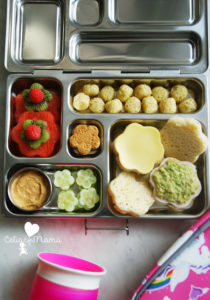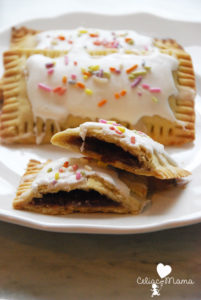From a young age you’ve been teaching your child the importance of sharing, but now that he or she has been diagnosed with celiac disease it can be difficult to un-teach them that when it comes to food. In fact, even when they understand that they’re not supposed to share snacks, it can be difficult for them to resist temptation when they see a delicious chocolate chip cookie. Additionally, offering someone some of your snack or dessert is a sign of friendship at a young age, so it can be hard for your child to say no when they don’t want to hurt the other child’s feelings.
In our case, we used three tips to talk to our daughter about food sharing: role playing, open communication, and a gluten free and dairy free stash of snacks and desserts at school. Unfortunately, there were a couple of instances in which she succumbed to temptation or wanted to fit in, but that is normal and these tips helped minimize those occurrences.

1. Role Playing – My husband and I would take turns role playing with our daughter. We would rotate who would play our daughter and who would be another child in class. This would help her practice saying no in a nice way that wouldn’t make her or her friend feel bad. Something important to note is that when we first started, our daughter thought the appropriate thing to do was to ask the child if the snack contained gluten. Most pre-schoolers and older kids (and many adults) have no idea what gluten is, so they couldn’t possibly answer that question. Plus, even if it was gluten free, unless it was individually wrapped there would be no way to account for cross contamination. But, that is way to confusing to explain to a preschooler, so instead the best message is “don’t share food.”
2. Open Communication – I knew that there would be foods at school that would be enticing to our daughter, so from day one I told her that if she saw something at school that she really wanted to try she needed to tell me and I would make or buy a safe alternative. For the first month of school, I would ask her regularly “What did the other kids eat at school? Was there anything that you saw that you’d like to try?” At first, she always said no. But later, she would come home and tell me about burgers or chicken fingers, or cookies. Healthy eating is very important to us, so I wasn’t going to give her junk food if I could help it. But, there are so many options out there that we always found an alternative that was safe and healthy. The reality is that children are human, and if they see their friends eating a yummy dessert, they are going to want to try it. Building a trust via open communication will help your child come to you so that you can ensure they get that experience and stay safe, rather than having them find out the hard way that they shouldn’t have eaten that cookie.
3. Keep extra supply of snacks and desserts at school. This is key for us. Between holiday celebrations and student birthdays there were tons of celebrations throughout the school year. I bake a dozen cupcakes (half chocolate, half vanilla so that they can match whatever is brought into class closely) and the teacher would store them in a freezer so that our daughter always had something. I highly recommend this too. If you know in advance of a holiday party, you may be able to bring something in that day, but surprises will come up and this way your child will be able to participate.








Leave a Reply
You must be logged in to post a comment.